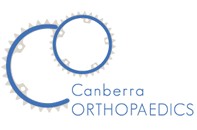Cartilage Problems
Cartilage Problems: Causes, Symptoms, and Treatment
What is cartilage?
Cartilage is a rubbery and flexible connective tissue, which acts as a cushion and reduces friction between the bones of the joints.
There are three types of cartilage:
Elastic cartilage is springy and supple, and makes up the outside of the ears and some of the nose.
Fibrocartilage is the toughest cartilage and is found between the discs and vertebrae of the spine and between the bones of the hip and pelvis.
Hyaline cartilage is springy, tough, and elastic, and is found between the ribs, around the windpipe, and between the joints (articular cartilage).
All cartilage can be damaged, and it’s difficult for it to heal, as unlike many other tissues, cartilage doesn’t have its own blood supply.
What causes cartilage damage?
Cartilage damage can happen in several ways. A direct injury, such as a car accident, a fall, or a sports injury can result in cartilage damage, as can wear and tear from long periods of stress. This breakdown and loss of cartilage is known as osteoarthritis and is common in the knee.
Long periods of inactivity can also increase the risk of articular cartilage damage, as joints require regular movement to stay healthy.
What are the symptoms of cartilage damage?
When the cartilage is damaged, it can result in pain, stiffness, and inflammation. There may be stiffness, swelling, loss of movements, and tenderness in the affected joint.
How are cartilage problems diagnosed?
It’s important to first rule out a sprain, as symptoms can be similar to cartilage damage. Along with a physical examination, imaging tests such as MRI may be able to reveal the damage.
An arthroscopic surgical procedure can also be used to determine the extent of the damage, as well as repair it.
Arthroscopy is a less invasive surgery performed using small incisions and a tiny camera which helps the surgeon guide the small instruments used to repair the cartilage, usually in a same-day or outpatient procedure.
What treatment options are available for cartilage problems?
Non-surgical treatments for cartilage damage can include special exercises, anti-inflammatory drugs, and steroid injections.
If conservative treatments don’t work, there are a range of surgical options, including:
Debridement
Debridement involves smoothing the damaged cartilage and removing loose edges to prevent it from rubbing, and is performed via arthroscopy.
Marrow stimulation
For this procedure, the surgeon drills tiny holes under the damaged cartilage, to expose the blood vessels inside the bone. This creates a blood clot inside the cartilage that triggers the production of new cartilage. Unfortunately the new cartilage is more prone to wearing away, meaning the patient may require further surgery down the track.
Mosaicplasty
Mosaicplasty involves taking healthy cartilage from one part of the body and transplanting it to the damaged area. This is only used for isolated areas of cartilage damage, and not more extensive damage (as is often in the case of osteoarthritis), and is most commonly used in younger patients with isolated injury.
Autologous chondrocyte implantation
This procedure involves taking a small piece of cartilage, and using it to grow more cartilage cells in a laboratory. The process can take between 1 to 3 months, and the new cartilage cells are then implanted into the damaged area.
How long does recovery take?
If left untreated, cartilage damage can be severely disabling, leading to increased pain and immobility.
Recovery times depend on the treatment path chosen.
Movie – Articular Cartilage Problems: Drilling/Microfracture
Movie – Articular Cartilage Problems: Removal of Damaged Cartilage
Movie – Autologous Chondrocyte Implantation
Further Information
Cartilage Problems: Causes, Symptoms, and Treatment What is cartilage? Cartilage is a rubbery and flexible connective tissue, which acts as a cushion and reduces friction between the bones of the joints. There are three types of cartilage: Elastic cartilage is springy and supple, and makes up the outside of the ears and some of the […]
